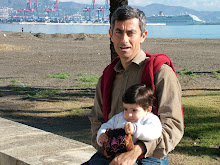The lungs serve to exchange the two gases in the blood. Oxygen enters the blood from the lungs and carbon dioxide is expelled out of the blood into the lungs. The blood serves to transport both gases. Oxygen is carried to the cells. Carbon dioxide is carried away from the cells.
Mitochondria
Mitochondria are known as the powerhouses of the cell. They are organelles that act like a digestive system that takes in nutrients, breaks them down, and creates energy for the cell. The process of creating cell energy is known as cellular respiration. Most of the chemical reactions involved in cellular respiration happen in the mitochondria. A mitochondrion is shaped perfectly to maximize its efforts. Mitochondria are very small organelles. You might find cells with several thousand mitochondria. The number depends on what the cell needs to do. If the purpose of the cell is to transmit nerve impulses, there will be fewer mitochondria than in a muscle cell that needs loads of energy. If the cell feels it is not getting enough energy to survive, more mitochondria can be created. Sometimes they can even grow, move, and combine with other mitochondria, depending on the cell's needs.
What Do They Look Like?
Mitochondria can be a variety of shapes, but you usually see them drawn like a peanut. Well, a peanut with a funny squiggly blob thing inside it, actually. This represents a double membrane: a mitochondrion has a smooth outer membrane and an inner membrane which is very folded and wrinkly. The stuff inside both membranes is called 'the matrix' and the bit in between both membranes is called 'the intermembrane space'. (It would seem that certain biologists don't have much imagination when it comes to naming things). The folds of the inner membrane are called cristae.
Mitochondria Structure 
Mitochondria have two membranes (not one as in other organelles). The outer membrane covers the organelle and contains it. The inner membrane folds over many times (cristae). That folding increases the surface area inside the organelle. Many of the chemical reactions happen on the inner membrane of the mitochondria. The increased surface area allows the small organelle to do as much work as possible. If you have more room to work, you can get more work done. Similar surface area strategies are used by microvilli in your intestinal cells. The fluid inside of the mitochondria is called the matrix.

Mitochondria have two membranes (not one as in other organelles). The outer membrane covers the organelle and contains it. The inner membrane folds over many times (cristae). That folding increases the surface area inside the organelle. Many of the chemical reactions happen on the inner membrane of the mitochondria. The increased surface area allows the small organelle to do as much work as possible. If you have more room to work, you can get more work done. Similar surface area strategies are used by microvilli in your intestinal cells. The fluid inside of the mitochondria is called the matrix.
Using Oxygen to Release Energy
How are mitochondria used in cellular respiration? The matrix is filled with water (H2O) and proteins (enzymes). Those proteins take food molecules and combine them with oxygen (O2). The mitochondria are the only place in the cell where oxygen can be combined with the food molecules. After the oxygen is added, the material can be digested. They are working organelles that keep the cell full of energy. A mitochondrion may also be involved in controlling the concentration of calcium (Ca) within the cell.
Press play if you want to learn more about Mitochondria.
Click here to see and hear the pronunciation of the most important words.
Worksheet about the video
And here you have the transcription.



